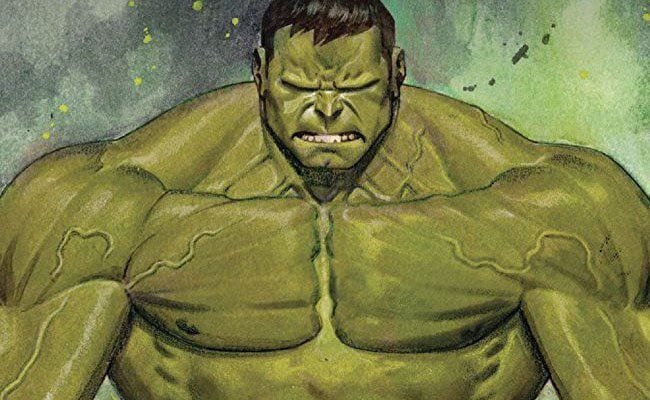
There are few constants in the ever-evolving, constantly-retconning narrative that is the Marvel universe. Costumes may change. Marriages may be undone by deals with Mephisto. Characters may turn out to be from an alternate universe, a Skrull agent, or evil clones of characters that died years ago. The fact that anyone can accept that kind of convoluted continuity with a straight face is a miracle, in and of itself. That makes the constants that remain all the more important and few are as memorable or iconic as the Hulk’s anger.
His enemies may not like it when he’s angry, but the Hulk’s destructive rage makes for some of the best entertainment that the Marvel universe can offer. That anger, as blinding as it can be sometimes, takes many forms over the course of the Hulk’s illustrious life. The rage that begins under Stan Lee’s legendary pen is not the same as the one that continues under Greg Pak. That’s what makes the concept of mixing the past and present so intriguing. That’s the premise behind the Marvel Generations series. That’s how the rage of one Hulk meets the rage of another in Marvel Generations: Banner Hulk and Totally Awesome Hulk #1.
In terms of context, the differences between Bruce Banner and Amadeus Cho are considerable. While both carry the burden of the Hulk, the weight of that burden is different for both characters. The death of Bruce Banner in Civil War II and the emergence of Amadeus Cho in Totally Awesome Hulk puts both characters on a different path. Pak, with the skilled art of Matteo Buffagni, brings those paths together in a story of shared anger.
The premise of the story is somewhat unclear. The mechanism by which Cho ends up in the past, confronting the Hulk during one of his earliest clashes with General Ross, is not overtly explained. Cho is in the present one moment. Then, he’s in the past. That’s the extent of the explanation.
That’s not to say it’s wholly contrived. In a world routinely driven by reality-bending hardware like the Cosmic Cube, the Infinity Gauntlet, and editorial mandates, it’s not that much of a stretch that Cho would find himself unexpectedly in the past. That sounds like the sort of thing that happens to anyone who hangs out with Cable too much.
The lack of a premise does little to undermine the gamma-powered action, though. Pak doesn’t waste any time giving Hulks from two different eras to start smashing something. He understands that if there are going to be two hulks in a story, then there needs to be twice the smashing. Marvel Generations: Banner Hulk and Totally Awesome Hulk #1 does plenty to fill that quota. Buffagni also does plenty to give it the distinct visual elements that make a Hulk story stand out. There are open spaces, raging monsters, and hard-nosed old men trying to solve problems by blowing them up.
In terms of checking the boxes for a classic Hulk story, Marvel Generations: Banner Hulk and Totally Awesome Hulk #1 covers most of the basics. However, the boxes it doesn’t check are arguably the most important and that represents the most significant flaw in a story that otherwise has ample entertainment value. It’s not enough to just have two Hulks smashing things. That’s all well and good, but smashing without any greater meaning or drama behind it is just empty smashing. Even with the Hulk, that kind of smashing only goes so far.

It’s when Cho and Bruce Banner aren’t bulky green behemoths where the story really stalls. There’s some initial confusion, as is to be expected whenever someone not named Dr. Doom warps time and space. Then, they start interacting, but not much comes of it. They try to avoid General Ross. They attempt to conceal themselves in populated areas. They even talk about their respective struggles to control the Hulk and the rage that drives him.
However, not much really comes from those conversations. Cho and Banner don’t tell each other anything that they don’t already know about themselves or the Hulk. There’s not much dramatic impact in anything they do. Cho barely references the Hulk’s future death in Civil War II, nor does he show much emotion when interacting with Banner. Given their history and their various connections throughout the Hulk’s mythos, it feels downright muted.
There’s still an underlying theme. There’s still a sense of connection between Amadeus Cho’s version of the Hulk and Bruce Banner’s version. Concepts of anger, burdens, and dealing with inner monsters are all there. There’s just no melodrama behind it. It may as well be an unnecessary reminder. Anyone who reads a Hulk comic from any era will get that same message, albeit with different varieties of smashing.
There’s nothing about the narrative in Marvel Generations: Banner Hulk and Totally Awesome Hulk #1 that’s out of place in terms of characterization, plot, or style. Both Banner and Cho get a chance to be their own Hulk. Pak, whose Hulk pedigree is beyond dispute, handles both characters as well as he has in previous efforts. Buffagni’s artwork helps supplement those efforts. That’s what makes the utter lack of impact so glaring and for a character who specializes in smashing, that’s saying a lot.
Mixing elements from the past and present creates opportunities to explore classic themes while expanding on the dramatic weight that has built up to such a massive extent over the years. Marvel Generations: Banner Hulk and Totally Awesome Hulk #1 feels like one of those opportunities only partially realized. It does enough to smash all the right things. It just doesn’t add enough merit behind the smashing.

